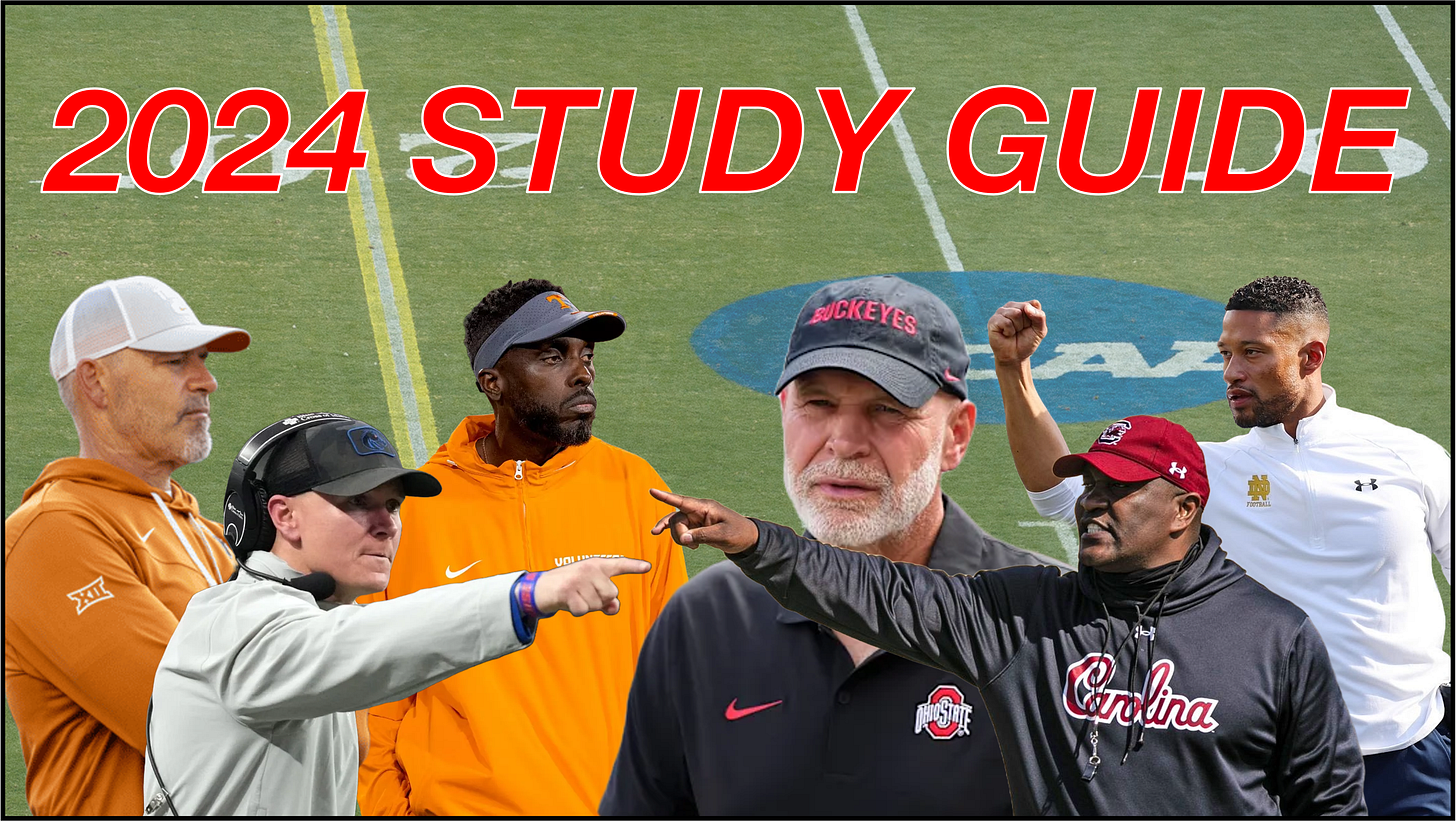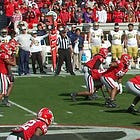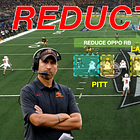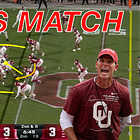3rd Annual Off-Season Study Guide ('24)
Here's who you should be studying this offseason.
As the year draws to a close, coaches are starting to plan for the upcoming year. With so much information available, it can be overwhelming to find teams to study. Instead, avoid outdated metrics such as rushing and passing yards and focus on advanced analytics.
Also, try looking outside your region for teams to watch. We have coaches in different ecosystems and at different program sizes. So, expanding your horizons is best if you're looking for fresh ideas. Get out of your fish bowl.
When I am looking to study defenses, I consider their overall efficiency. In the NFL, many experts use FTN’s DVOA stat to rate units. In college football, Brian Fremeau runs BCF Toys, which uses a similar formula for rating college defenses and has other advanced metrics to weigh defenses against each other. There are plenty of other advanced metrics to judge defense on both sites. If you have been following me, you may have seen his ratings.
Parker Fleming of CFB Graphs concentrates on EPA, or Expected Points Added, which focuses on field position and Down & Distance concerning the play. I find this stat particularly useful because it considers historical context and evaluates each play based on its position on the field.
For instance, a 3-yard play on 1st & 10 cannot be compared to a 3-yard play on 3rd & 2. By adding the value of the field position, we can get a more accurate picture of how teams are gaining or restricting yards.
FEI and EPA statistics provide valuable insights into a defense's effectiveness. Both metrics offer a detailed perspective on how the unit operates as a whole. For example, a team could be proficient in defending the pass but struggle in run defense.
Many times, the FEI and EPA rankings will mirror each other. If you are an efficient defense, you limit what teams are doing offensively. But they don’t always match up.
I also look for teams that are doing more with less. BCF Toys FEI weighs the strength of schedules, so it is common for G5 teams to be featured down the rankings compared to their Power 4 counterparts. I included the top G5 defenses in each category in the lists below. I find that many times, it is at those levels you see the most creativity.
Each college football conference has a unique ecosystem, and as an analyst, I always consider this when deciding which team to watch. Knowing what teams must defend weekly is vital for understanding their performance. For instance, the Big 10 presents different defensive issues than the Big 12.
I love the diversity in schematics at the college level and try to avoid relying on national rankings or conference affiliation bias when searching for new ideas. There are ideas everywhere; you just have to look.
—
Below, I identify important categories for examining defenses. These categories cover everything from FEI to coverage schemes to blitz rates. I have created Top-5 lists for most of the categories. Some names appear repeatedly, which is typical for a top unit.
I dropped the front structures because more teams run multiple fronts and hybrid coverage systems. The ‘old’ standards are still there, though: Pitt (Over MEG Quarters), Iowa (Under Quarters/Cover 3), Army (East Coast 3-4 zone-centric), Iowa State (3-High/multiple), etc.
—
» College articles from this past season:
Keep reading with a 7-day free trial
Subscribe to MatchQuarters by Cody Alexander to keep reading this post and get 7 days of free access to the full post archives.














